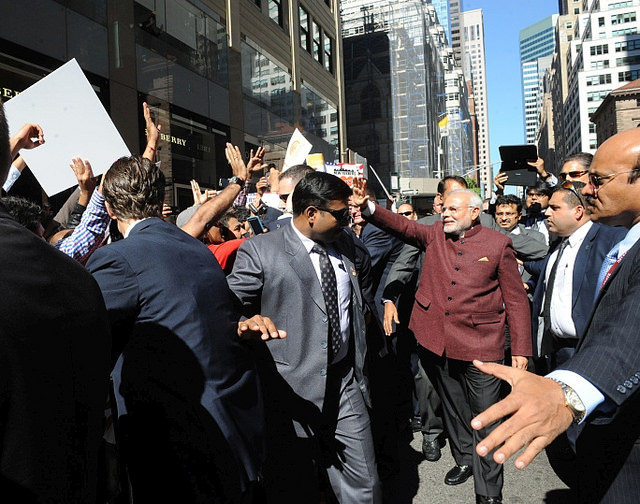By Sharon Simonson

FREMONT, Calif.—Hindi may soon supplant Western European tongues such as German and Portuguese as a staple of the public high-school curriculum, at least in Silicon Valley.
Moved by passion for culture and elevated by a rapidly rising Asian-Indian population, a cadre of Indian-American women in Fremont has worked for seven years to satisfy California’s requirements to bring a new language into public schools. In a major advance this fall, the Teacher Education Department at California State University, East Bay, enrolled its first student seeking to gain her primary California teacher certification in Hindi language instruction.
With its new status, Hindi’s track in California public education diverges from Telugu and Tamil, two other widely spoken Indian languages in their own South Bay communities: there is no path to California teacher certification for Tamil or Telugu.
The Asian Indian population has doubled in Alameda and Santa Clara counties since 2000 and is growing faster in both counties than all other Asian subgroups, according to Census Bureau estimates released Dec. 4. For the first time, slightly more Asian Indians live in Santa Clara County than Vietnamese: 127,000 versus 126,000. Each group represents about 7 percent of the county’s total population.
Anupama Sarna plans to complete her Hindi teacher certification at CSU, East Bay, next year. The principal of a private, nonprofit Hindi-language school in Fremont, MBK Language Center, would be the first to gain a primary teacher certification in Hindi and become the second certified Hindi-language teacher in the state. The honor of first California-certified Hindi teacher goes to Madhu Aggarwal, the founder of the Fremont school, who in 2013 gained her primary certification in science, then added Hindi language.
“It’s a huge milestone,” said Aggarwal, who began teaching Hindi 27 years ago at a local temple for her own children then set up the school when others asked her to teach their children too. Aggarwal is now teaching a granddaughter Hindi. Her son is 34-years-old, her daughter 27.
“Now when I go to a (public) school asking that they start a Hindi program, they can no longer say they can’t find (certified) teachers. That has been a major roadblock to even initiate these conversations,” she said. “Considering the number of Indian people (in Fremont), there is no reason whatsoever that Hindi is not offered in our school system.”
India’s linguistic landscape is complicated and politicized. Some Indians reject English as a colonial legacy though it is still the language of the educated and elite. Newly elected Indian Prime Minister Narendra Modi, a Hindu nationalist from the northwest state of Gujarat, has made communicating in Hindi a hallmark of his administration though he speaks fluent English.

The Indian constitution, which became effective in 1950 after independence, recognized Hindi as the national language, and Hindi is spoken widely in north India, where Modi’s political party is strong, according to Voice of America news online.
But in states such as southeast India’s Andhra Pradesh, Telugu is the official language, spoken by 64 million people. Tamil is the state language of the state of Tamil Nadu, at India’s southern tip, where 61.5 million people speak it as their first language. In comparison, about 260 million people in India speak Hindi as their first language, primarily across six states in central and north India, according to AboutWorldLanguages.com. In the past, efforts to make Hindi the country’s only official language caused riots in the south, VOA said.
In the last 15 years Indians have overtaken the Chinese as the largest Asian population in Fremont, more than doubling to 43,000 people, not quite 20 percent of Fremont’s total, according to the most current Census Bureau estimates. The Chinese in Fremont constitute not quite 17 percent of the city’s total, or 37,000 people. More than half — 51 percent — of Fremont’s 218,000 people are Asian today; 26 percent are non-Hispanic white, and 15 percent are Hispanic.
Hindi has been a “losing language” to English in India’s big cities, associated with bumpkins from the countryside, Aggarwal said. Modi’s emphasis on Hindi as an official language has highlighted the loss of written Hindi skills within the Indian population, according to VOA.
In the past, parents who brought children to her Fremont school to learn Hindi often spoke to her in English, Aggarwal said: “They told me they didn’t really speak Hindi.” Now she insists that everyone speak Hindi and says she sees change in the region’s Indian community: “Pride in our culture has awakened.” Her goal is for all of the nine teachers at her school to become California-certified in Hindi, Aggarwal said.
A pipeline of certified teachers — not to mention student demand — is a crucial part of getting any school to add Hindi instruction to its daily course offerings, said James Maxwell, director of secondary education at Fremont Unified School District, which has 42 schools and 34,000 students from pre-kindergarten through high school and adult education.
Even a large high school with 2,000 students can support a maximum of three or four foreign languages, Maxwell said. Above that, and upper-level classes become too small — less than 25 students — and the more popular languages cannibalize those less in demand. “One of the reasons Chinese opened up in the Bay Area is because German died, and it’s almost not offered, so that created an opening for a third language,” he said.
The California education code addresses foreign-language instruction uniquely, allowing districts to accept classroom instruction from vetted third-party schools and to grant course credit equal to that given for classes taught on campus as part of the formal school day. The state’s public universities also can accept the credits. But the Hindi, Tamil and Telugu advocates say parents have to pay for the additional instruction, which can be a financial stretch, and students must attend the same number of class hours — 140 — as they would if the language instruction were during the main school day, but they have to do it after school and on weekends.
At Fremont USD, where nearly 6,700 students speak 54 languages other than English at home, the district accepts credits from 11 foreign-language schools in Fremont, San Jose and Union City, including the California Tamil Academy and SiliconAndhra ManaBadi, where Telugu is taught. The most recent addition is a Farsi-Dari-Pashto language school serving the city’s Afghan community.
Despite the growth in Fremont’s Indian community, he does not see Hindi, Telugu or Tamil language-instruction becoming part of the in-school course offerings in the next several years, Maxwell said: “Five or 10 years down the road, maybe. One of the things they have working against them is that there are three.”
Five years of change:
Alameda County Asian Population 2009:
Asian-Indian: 63,300 / 4.3 percent of the population
Chinese: 131,350 / 9.0 percent
Filipino: 79,350 / 5.4 percent
Vietnamese: 27,000 / 1.8 percent
Alameda County Asian Population 2013
Asian-Indian: 80,194 / 5.2 percent
Chinese: 149,647 / 9.7 percent
Filipino: 86,240 / 5.6 percent
Vietnamese: 30,841 / 2.0 percent
Santa Clara County Asian Population 2009
Asian-Indian: 100,800 / 5.8 percent
Chinese: 140,628 / 8.1 percent
Filipino: 85,000 / 4.9 percent
Vietnamese: 114,000 / 6.6 percent
Santa Clara County Asian Population 2013
Asian-Indian: 127,500 / 7.0 percent
Chinese: 156,700 / 8.6 percent
Filipino: 88,850 / 4.9 percent
Vietnamese: 126,439 / 7.0 percent
Source: U.S. Census Bureau American Community Survey 2005-2009 & ACS 2009-2013